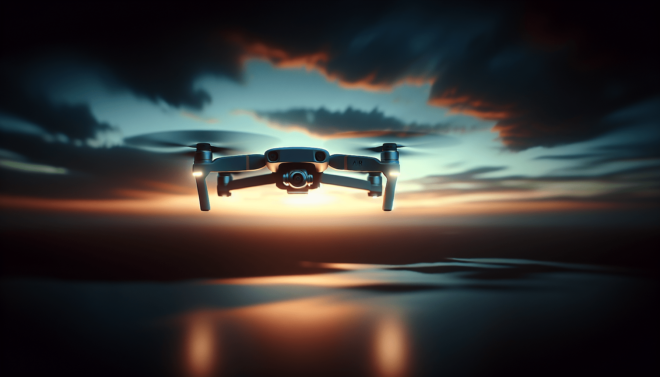Have you ever wondered how well a drone can perform when the sun sets? Understanding the capabilities of your drone in low-light situations can be crucial, especially if you’re looking to capture those stunning sunset or night-time shots. In this article, we explore the low-light performance of the DJI Air 3S, a popular choice among drone enthusiasts.
Understanding Low-light Performance
Before delving into its capabilities, it’s important to comprehend what low-light performance actually entails. Essentially, this refers to a drone camera’s ability to capture clear and detailed images in dim lighting conditions, such as dusk, nighttime, or indoors. For aerial photography and videography, this performance can make a huge difference between a grainy mess and a stunning shot.
Factors Affecting Low-light Performance
Several key aspects influence how well a drone camera can operate in low light:
- Sensor Size: A larger sensor can gather more light, thus enhancing image quality.
- Aperture: A wider aperture allows more light into the camera, which is beneficial in low-light situations.
- ISO Range: High ISO capability helps in capturing brighter images, though it may add some noise.
- Image Stabilization: Reduces blurriness caused by motion, crucial for shooting in low light without a tripod.
These aspects interplay to determine how effectively a drone captures photos and videos when lighting is far from perfect.
Overview of DJI Air 3S Features
The DJI Air 3S is equipped with an array of dynamic features that make it attractive to photographers and videographers alike. These features not only appeal to those interested in low-light shooting but also enhance overall ease and quality of flight and capture.
Sensor and Camera Capabilities
The DJI Air 3S boasts a 1-inch CMOS sensor, which is larger than many other drones in its class. This gives it a significant advantage when it comes to low-light performance, as it can capture more light compared to smaller sensors, resulting in clearer and richer images. The camera is capable of capturing 20-megapixel still images and shooting 5.4K video, offering a high level of detail that’s ideal for both enthusiasts and professionals.
Aperture and ISO Range
With a variable aperture ranging from f/2.8 to f/11, DJI Air 3S offers the flexibility to adjust according to the available light. The f/2.8 aperture setting allows the maximum amount of light into the lens, which is perfect for dusk or evening shooting. Additionally, the ISO range expands up to 12,800, which, though may introduce some noise, still allows for bright imagery in dark environments.
Assessing Low-light Performance
Given its features, how does the DJI Air 3S actually perform in low-light conditions? Evaluating its performance involves examining different recording modes and settings to determine its adaptability and quality in various scenarios.
Evening Photography and Videography
When photographing or filming at dusk, the DJI Air 3S’ abilities become particularly noticeable. In these conditions, the large sensor and wide aperture work in harmony to capture more light, resulting in vibrant and detailed images with minimal noise.
Indoor and Artificial Lighting
Indoors or under artificial lighting, you might find lower light levels challenging, but the Air 3S still performs admirably. Its high ISO range allows it to maintain sufficient brightness without excessive noise, thanks to its processing capabilities and smart algorithms that help clean up grainy images.
Night-time and Extreme Low Light
When the light fades almost completely, such as during night-time flights, the drone’s performance is understandably challenged. However, the Air 3S remains operational and continues to produce usable images, albeit with some increase in noise. For those who frequently shoot in these scenarios, post-processing might be necessary to perfect the results.
Comparing DJI Air 3S with Other Models
To better understand the Air 3S’s place in the market, let’s compare it with a few other popular drones in terms of low-light performance.
Table: Low-light Features Comparison
| Feature | DJI Air 3S | DJI Phantom 4 Pro | DJI Mavic 2 Pro | Autel EVO Lite+ |
|---|---|---|---|---|
| Sensor Size | 1-inch | 1-inch | 1-inch | 1-inch |
| Megapixels | 20 MP | 20 MP | 20 MP | 20 MP |
| Video Resolution | 5.4K | 4K | 4K | 6K |
| Max ISO | 12,800 | 12,800 | 12,800 | 6400 |
| Aperture Range | f/2.8 – f/11 | f/2.8 – f/11 | f/2.8 – f/11 | f/2.8 – f/11.2 |
From the table, you can see that the competition among drones regarding low-light performance is quite balanced. Yet, the Air 3S edges out certain competitors with its enhanced video resolution, making it suitable for those who prioritize video quality.
Tips for Enhancing Low-light Performance
While the DJI Air 3S offers impressive low-light capability, some techniques can help you get the most out of your drone in dim conditions.
Use Manual Settings Over Auto
Switching from automatic to manual settings allows you to control shutter speed, aperture, and ISO. This enables you to tailor each shot to the lighting conditions, optimizing for less noise and better exposure.
Leveraging Exposure Profiles and Bracketing
Experimenting with exposure profiles and bracketing can be quite beneficial in low-light scenarios. These features help you get the correct exposure by taking multiple shots at different settings, which you can later combine in post-processing for optimal results.
Utilize Filters
Neutral density (ND) filters effectively manage exposure, preventing overexposure when capturing scenes with bright lights, like cityscapes at night.
Conclusion
Reflecting on the performance of the DJI Air 3S, it’s clear that this drone is impressively equipped for low-light shooting. With its large sensor, flexible aperture, and substantial ISO range, it captures clear and vibrant images even as daylight fades. For enthusiasts and professionals who often find themselves shooting during the magical twilight or just after dusk, the DJI Air 3S proves to be a reliable and formidable companion. As you experiment with different settings and shooting techniques, you’ll find that this drone doesn’t merely meet expectations—it can surpass them, revealing new possibilities with every flight.

